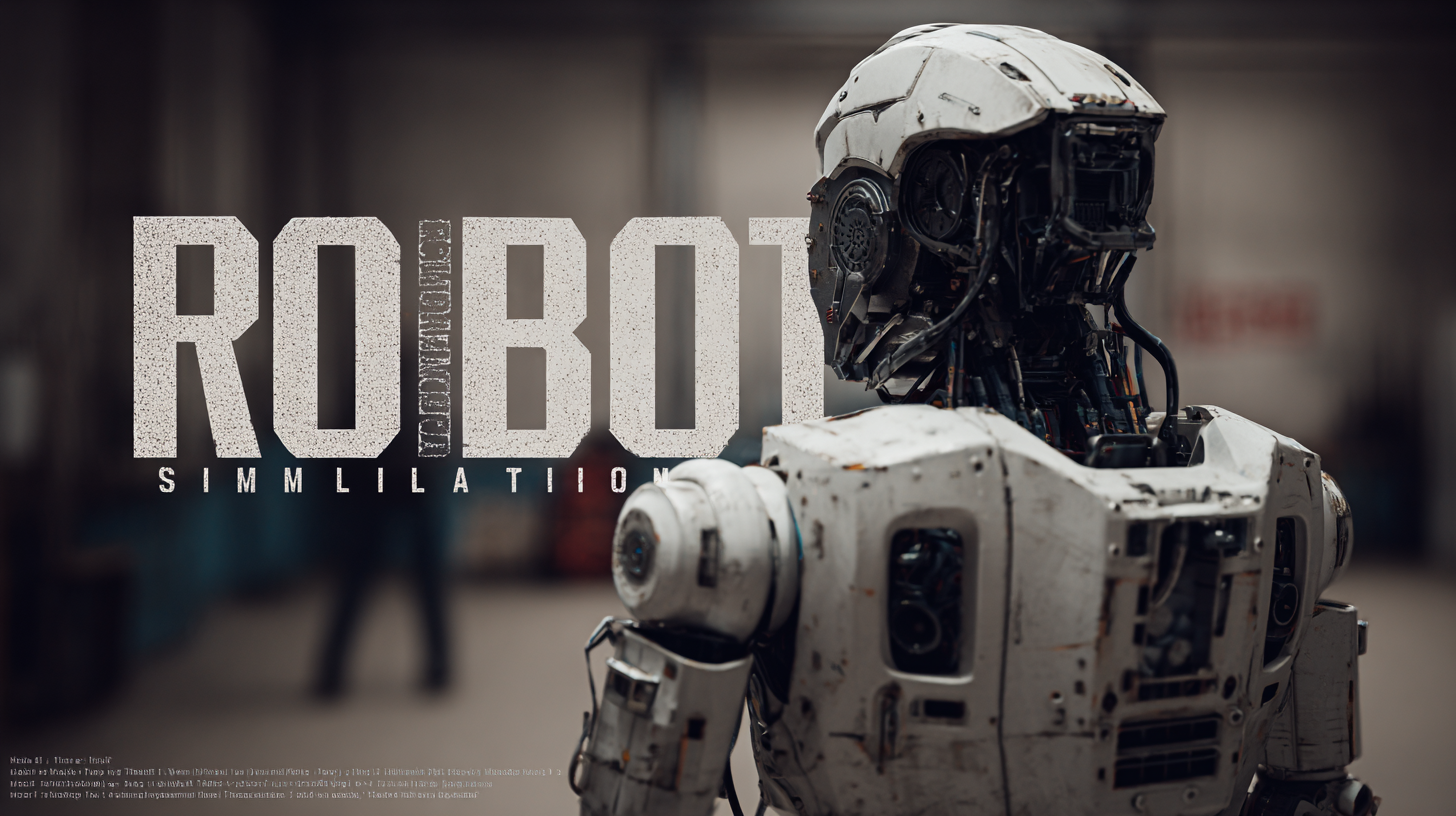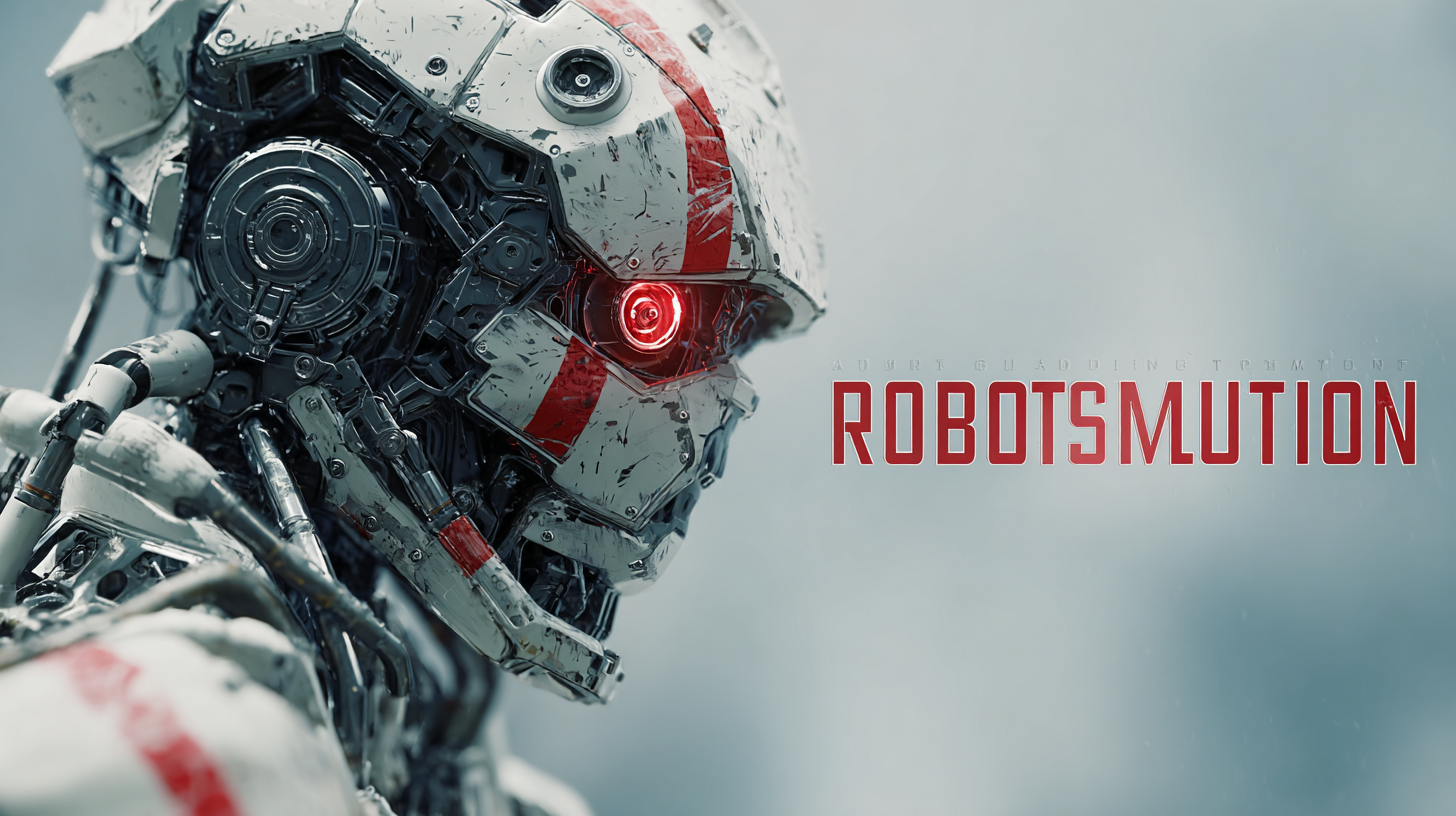
sale@excitechrobot.com

14, Raghava Enclave, Transport Road, Secunderabad, Hyderabad (500009)
©2024 All Rights Reserved by BlackCoffeeRobotics
In today's rapidly evolving technological landscape, Robot Simulation has become an indispensable tool for industries aiming to enhance their operational efficiency and innovation. According to a report by MarketsandMarkets, the global robotics simulation market is expected to grow from $1.4 billion in 2022 to $4.5 billion by 2027, showcasing a remarkable CAGR of 25.5%. This surge is largely driven by the increasing adoption of automation in manufacturing, logistics, and healthcare, as well as the rising need for cost-effective training and development solutions. Various types of robot simulation techniques cater to different applications, allowing businesses to accurately model complex robotic systems, optimize workflows, and predict system behaviors in a risk-free environment. In this ultimate guide, we will explore these diverse simulation techniques, their specific characteristics, and their applicable benefits for a range of products and industries.

In the rapidly evolving field of robotics, mastering key simulation techniques is crucial for shaping the industry by 2025. These techniques not only enhance the design and testing processes but also pave the way for innovative applications across various sectors. One such technique is physics-based simulation, which allows engineers to model real-world dynamics accurately. This enables the development of robots that can adapt to complex environments, improving their operational efficiency and safety.
Tip: Invest in powerful simulation software that supports physics modeling. Familiarize yourself with tools like Gazebo or Webots, which provide realistic environments to test your robots in various scenarios.
Another essential technique is the use of machine learning in simulations. By integrating AI into the simulation process, robotic systems can learn from their virtual experiences, leading to improved decision-making and task execution. As these simulations evolve, they empower developers to create more autonomous and intelligent robots.
Tip: Start incorporating data analytics into your simulation workflows. Analyzing simulation data can provide insights that contribute to refining robot behaviors and optimizing performance before real-world deployment.
The integration of AI and machine learning into robot simulation is revolutionizing the way we approach robotic development and testing. These advanced technologies enable robots to learn from their environments and improve their performance over time, mimicking the adaptive capabilities of biological systems.
In robot simulation, AI algorithms can process vast amounts of data generated during simulated environments, allowing for real-time adjustments and enhancements to programming. This ensures that robots are not only prepared for pre-defined tasks but can also adapt to unforeseen circumstances in dynamic settings.
Moreover, machine learning techniques, such as reinforcement learning, facilitate the development of more sophisticated robotic behaviors. By creating scenarios where robots can practice and receive feedback, these methods allow them to refine their skills progressively. This iterative learning process is invaluable for simulating complex tasks ranging from industrial automation to interactive personal assistance.
As the field of robot simulation continues to evolve, the synergy between AI and machine learning will likely lead to breakthroughs that enhance the efficiency, reliability, and autonomy of robotic systems in various sectors.
When diving into robotics, mastering effective simulation techniques is crucial. The right software tools can significantly enhance your ability to design, test, and program robots before they hit the physical world. Popular tools like Gazebo and Webots provide robust environments that allow users to create complex robotic models and scenarios, facilitating advanced algorithm testing in a risk-free setting.

Tip 1: Choose the right simulation software based on your specific needs. For instance, if you're focusing on autonomous navigation, consider using ROS (Robot Operating System) with Gazebo for seamless integration of simulation models and sensor data. This combination allows for realistic testing and provides insights into algorithm performance in real-time.
Tip 2: Leverage visualization and feedback features within these tools. Software like V-REP offers dynamic 3D simulations and allows for interactive design alterations during runtime. This can be invaluable for quickly iterating on design concepts and understanding how changes impact robot behavior.
By utilizing these essential tools and following these tips, you can significantly streamline your robot simulation process and enhance your overall mastery in the field.
When it comes to testing and validating robot simulations, adhering to best practices is crucial for achieving reliable and efficient outcomes. According to a recent report by the International Federation of Robotics (IFR), about 70% of robotic project failures can be traced back to insufficient testing protocols. To mitigate these risks, it's essential to adopt a structured approach that includes both virtual and physical testing environments.
 Virtual testing allows developers to identify potential issues early, while physical trials help in evaluating real-world performance, ensuring that simulations accurately reflect expected behaviors.
Virtual testing allows developers to identify potential issues early, while physical trials help in evaluating real-world performance, ensuring that simulations accurately reflect expected behaviors.
Incorporating advanced metrics and standardized benchmarks is also essential for validation. The Robotic Operating System (ROS) community emphasizes the importance of repeatable tests to assess performance under varying conditions. Reports show that simulations that integrate metrics such as task completion time and accuracy yield up to 50% better predictive performance when transitioned to real-world applications.
By utilizing these best practices, engineers can enhance the reliability of their simulations, ultimately leading to more successful implementations in diverse industries, from manufacturing to healthcare.
As we move into an era of advanced technology and innovation, the field of robotics simulation is rapidly evolving. Industry leaders must stay ahead of the curve by understanding the emerging trends shaping the future of robot simulation. One significant trend is the integration of artificial intelligence and machine learning techniques into simulation platforms. This allows for more accurate modeling of robot behaviors and environments, enabling smoother testing and validation processes.
Tip: To harness the potential of AI in your robot simulation, invest in training your team on the latest machine learning algorithms that can enhance predictive capabilities.
Another crucial aspect is the growing emphasis on virtual and augmented reality in simulation applications. These technologies provide immersive environments for training and operational testing, making it easier for teams to visualize robot interactions in real-time.
Tip: Consider incorporating VR and AR solutions into your simulation toolkit. Experiment with prototyping different scenarios to gauge their impact on efficiency and problem-solving within your workflows.
By keeping an eye on these trends, industry leaders can strategically leverage robotics simulation to enhance productivity and innovation in their operations.
